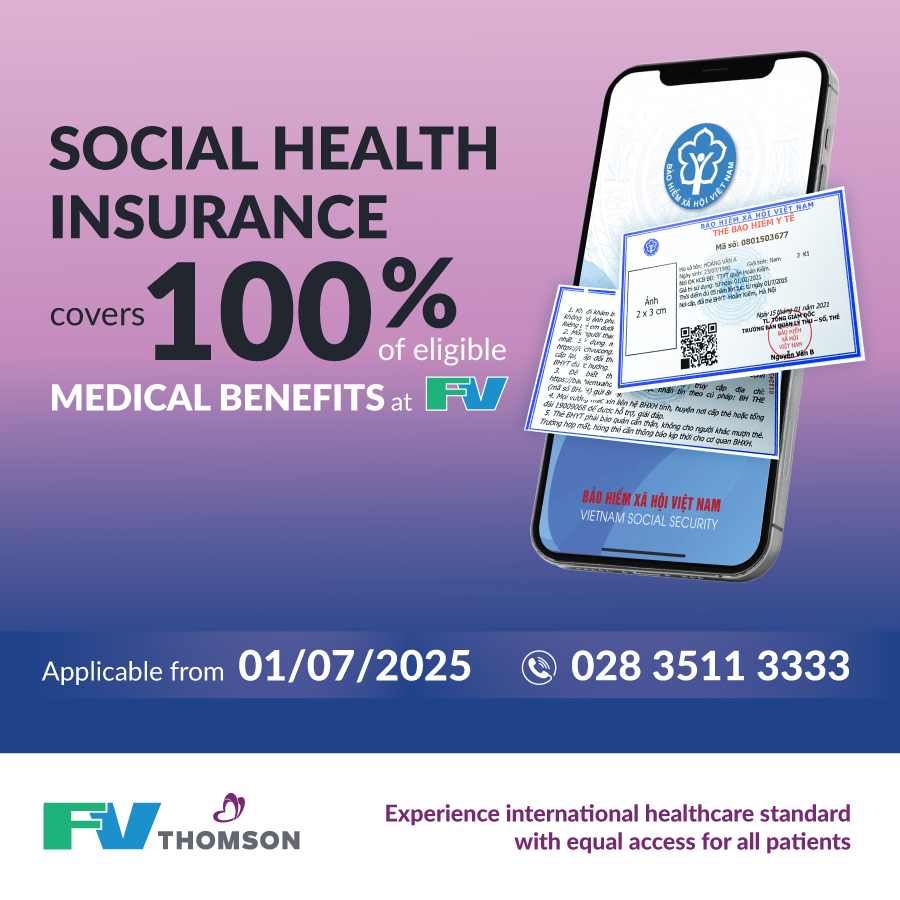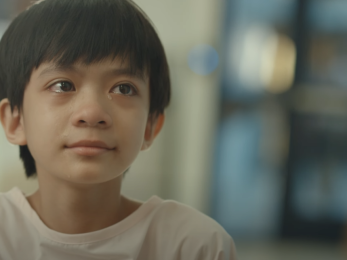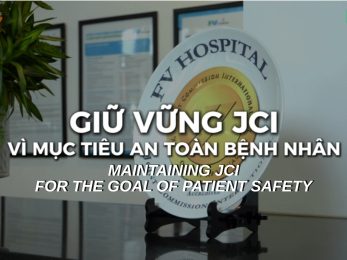Retinoblastoma, commonly referred to as eye cancer, is a rare but aggressive malignancy that primarily affects children under the age of five. If not detected early, it can rapidly damage the eye structure and spread to the brain, posing a serious threat to life.
A Strange Glimmer in Baby T.L.’s Eye Marked the Start of a Silent Threat
In late 2023, during a Christmas outing, 31-year-old Mr T. from Lam Dong noticed an unusual reflection in his two-year-old daughter’s eyes – a glow, similar to a cat’s eyes shining in the dark. Concerned, he brought his daughter to see a doctor. The diagnosis was devastating: his young daughter had retinoblastoma, a rare form of eye cancer.
Over the course of a year, baby T.L. underwent nine rounds of systemic chemotherapy. Each session brought difficult side effects – hair loss, vomiting, and weight loss. Despite her resilience, the tumour continued to return.
At the end of 2024, following a consultation at the Oncology Hospital, the medical team made a very difficult decision: to remove the affected eye in order to prevent the tumour from invading the brain. Knowing his daughter’s eye had to be removed, Mr T. was devastated. In silence, he signed the consent form for his daughter’s eye removal surgery
Just as baby T.L. was about to be taken into the operating room, the lead surgeon received unexpected news: FV Hospital could perform intra-arterial chemotherapy, a treatment capable of targeting the eye tumour directly. Overjoyed, the surgeon immediately cancelled the surgery and referred the child to FV Hospital in the hope of saving her eye. He shared that he and his colleagues had been searching for a hospital capable of this treatment for a long time and only that day had they finally received promising news from FV.
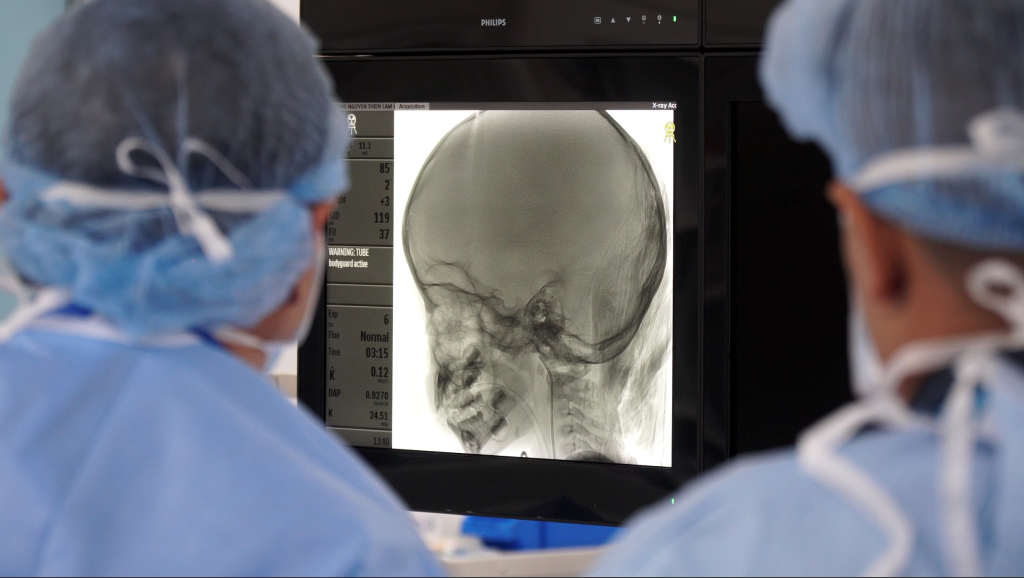
Notably, after learning of the family’s financial difficulties, the Children of Vietnam Charitable Fund at FV Hospital offered to cover all baby T.L.’s treatment and examination costs.
FV Hospital’s pioneering use of intra-arterial chemotherapy has opened a new door of hope for children with retinoblastoma in Vietnam, significantly reducing the need for eye removal and helping preserve vision. Supporting these young patients is the Children of Vietnam Charitable Fund, which provides financial assistance to families facing economic hardship during treatment.
Saving Baby T.L.’s Vision After Three Intra-Arterial Chemotherapy Sessions
To date, baby T.L. has completed three sessions of intra-arterial chemotherapy. Post-treatment MRI scans and fundoscopic examinations confirm that the tumour has fully calcified, with no signs of growth or vascular activity. Floating tumour seeds (seeding) in the vitreous have completely disappeared, and no evidence of recurrence has been detected. As a result, treatment has been discontinued, and baby T.L. will continue with monthly follow-up visits.
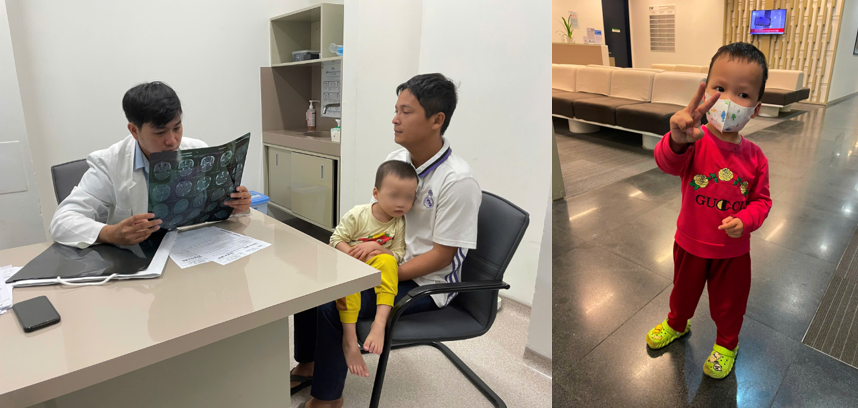
After each follow-up visit, as the results continued to improve, a spark of hope returns to Mr T.’s eyes – a father who once was willing to give up everything just so his daughter could see the light for one more day.
“I know that without this treatment, without the helping hands of kind strangers at FV, my daughter might have already lost her eye,” Mr T. shared emotionally.
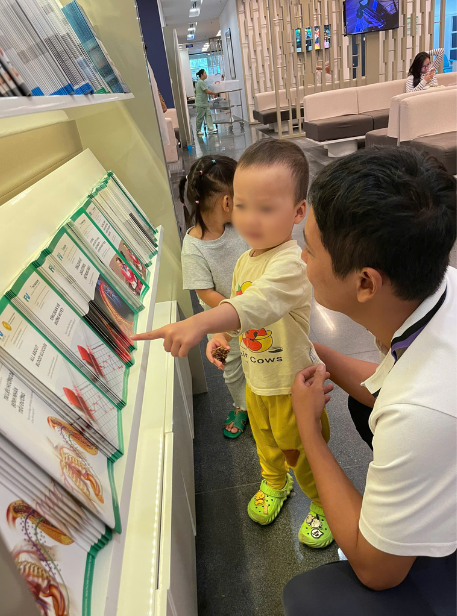
Early Detection and Treatment: A Lifeline for Retinoblastoma
Baby T.L. is one of many paediatric patients successfully treated with intra-arterial chemotherapy at FV Hospital. This advanced method not only helps preserve the eye but also offers children with retinoblastoma a better quality of life.
Retinoblastoma affects approximately 1 in 18,000 children and can involve one or both eyes. Around 30 percent of cases are linked to a genetic component. Without early diagnosis, the disease can lead to permanent blindness or, in severe cases, death due to brain metastasis.
Warning signs that parents should watch for include persistent strabismus, eye protrusion or prolonged redness, a white pupillary reflex in photographs (resembling a cat’s eye at night), reduced vision, or unusual eye-rubbing.
How is intra-arterial chemotherapy performed?
Intra-arterial chemotherapy (IAC) is a targeted therapy and a significant advancement in the treatment of retinoblastoma. This technique delivers chemotherapy directly into the ophthalmic artery, allowing the drug to concentrate at the tumour site while minimising systemic side effects.
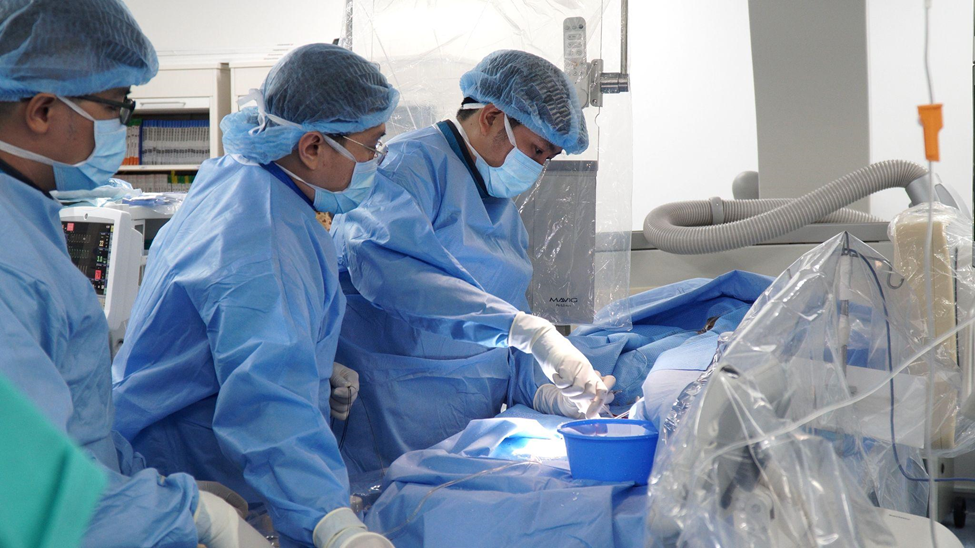
The procedure is performed in the interventional radiology suite and typically takes around 90 minutes, guided by advanced digital subtraction angiography (DSA) imaging. Once the patient is under general anaesthesia, the doctor accesses the femoral artery and threads a microcatheter through the internal carotid artery to the ophthalmic artery, the main vessel supplying the tumour. At this location, chemotherapy drugs – most commonly melphalan, sometimes combined with topotecan or carboplatin – are administered in doses customised to the child’s weight and clinical condition.
IAC delivers high drug concentrations directly to the tumour, increasing local effectiveness while significantly reducing systemic side effects compared to conventional chemotherapy. As a minimally invasive technique with a short recovery time, it is especially valuable for preserving the eye and preventing blindness or enucleation. Clinical studies have reported tumour control rates of up to 90%.
To learn more about retinoblastoma treatment using intra-arterial chemotherapy, please contact the Imaging Department at FV Hospital via hotline: (028) 35 11 33 33.

 Vi
Vi 



